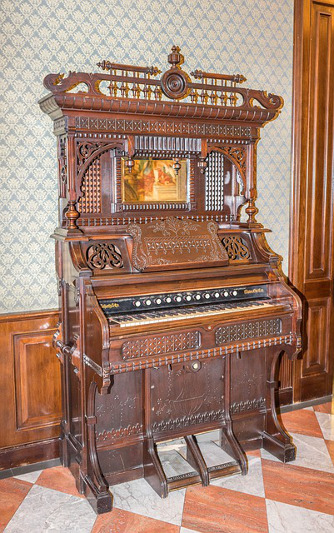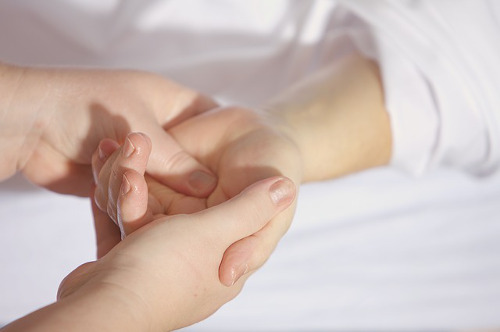Playing Keyboard and Your Handspan

Yes, Size Matters
I had concluded that my hands were too small. It was the first time I really tried to play octaves and although I could just reach one with my 'fairy' hands, it was kind of clumsy and out of position. I wondered if there was anything I could do about it.
Several years later and I'm trying again because simple pop/rock styles demand octaves, and it turns out that there are exercises that might help. While researching it, I found an amazing report on pianist handspans that tells you everything you could possibly want to know on the subject. It turns out that size does matter; Big is good. Congratulations if that's you. But what about the people with small hands?
'Small Hands' Defined
First of all, a 'small hand' is defined as one with a thumb to fifth finger span of less than 8.5" (21.6 cm) and/or a second to fifth finger span of less than 6" (16.2 cm). The reason for this fairly precise measurement is that it allows a pianist to play an octave with little or no tension in their hand in all situations.
| Handspan inches/cm | Distance |
|---|---|
| 6.7 (17.02) | octave on the edge |
| 7.6 (19.3) | octave with minimal comfort, 9th on the edge |
| 8.5 (21.59) | octave with little or not tension in all situations, 9th with minimal comfort, 10th on the edge |
| 9.4 (23.88) | 9th with little or no tension in all situations, 10th with minimal comfort, 11th on the edge. |
kansuze's left hand: 7.625"
"On the edge" is literal. With my right hand, I can press the keys only if my hand is off the keyboard. In proper position, it's difficult not to press other keys too. The chart is accurate for my left hand as well which fares slightly better and, apparently, I'm not alone. I fall into that significant minority (30%) of women who can't comfortably play an octave on a conventional keyboard.
Imagine the average man having to play 10ths and 11ths all the time. That's what this problem is like for us, and I'm not whining - I'm trying to cope without injuring myself. My piano teacher had seen hand injuries among his classmates.
Some History on Keyboard Size
Like with many inventions, piano keyboard standardization did not occur until much later. And during the years 1750-1850, when the best known piano repertoire was written, they were smaller than today while the music rarely had intervals greater than an octave.
In the late 1800s, while most middle and upper class women played the piano, generally the best they could be were accomplished amateurs. The professionals were mostly men, and as manufacturers were closely associated with the masters such as Liszt, pianos became larger. (Liszt had large hands, more later.)

During the 19th and 20th century, piano manufacturing also changed to use cast iron frames which led to increased string tensions which led to heavier and deeper action, longer key lengths, greater height of the black keys over the white, and vertical dip. This made them more difficult to play.
The one-size-fits-all approach has prevailed in the piano-keyboard world for nearly 100 years. And, like other one-size-fits-all systems, the largest was fitted, not the average.’ (Christopher Donison, 2000, p.112).
According to Wikipedia, the octave span of historical keyboard instruments (organs, virginals, clavichords, harpsichords and pianos) has ranged from 125 mm to 170 mm over the last 300 years. Modern piano keyboards are typically 164-165 mm over an octave.
Since 1880, more women haved strived for performing careers and there has been a dramatic growth in Asian students taking up piano. Modern repertoire also requires larger handspans. In response to the increased demand, in 1994, Steinbuhler & Company built the first DS standard® piano keyboard with narrower keys. You can read about it here. It's a great idea in concept, great for professionals, but I can't see myself buying another piano.
Some Hand Stretches for Pianists
When I measured my handspans, I was surprised to see that my smaller left hand had the wider span. A little more research and I found this wasn't unusual. Anecdotally, it was surmised that a pianists's left hand does more stretching and the ligaments can stretch a little. (They're telling me I can do something about it?)
Here are the stretches.
- Realize your hands may be too small for some intervals. Don't injure yourself.
- Stretch your hands often by putting your thumb or pinky on C, stretching your hand along the keyboard and holding. Feel the stretch and don't try to go further. Lotion and hand massage may help.
- Play pieces that have octaves (or ninths and 10ths if that's what you're working towards).
- Practice octave scales. Keep your fingers spread and increase speed when you can do it.
- Repeat.

A testament to the desperation of small handed pianists is the existence of mechanical devices used to stretch hands and fingers. A modern equivalent even exists. Seriously, please give the exercises a try. If it is that important, explore the new smaller keyboards.
Technique for Smaller Hands
The experts say you can go far with some good rotation/loose wrist action. Chopin's hands were medium sized but his flexible fingers helped him reach 10th intervals. You can see it in his intimidating pieces that require incredible dexterity.
You can also avoid the problem by slightly arpeggiating large chords. But realistically, these are problems for classical pianists. As I'm aiming for pop/rock, I would be happy with a just little more comfort, but I included a reference for those who are interested in strategies for small-handed pianists.
For a bit of humor, I included a link to the Youtube video, below, where a small-handed pianist tries to play a piece by Rachmaninoff who had freakishly big hands.
Handspans of Some of the Great Pianists
Dame Myra Hess 9th
Daniel Barenboim 9th
Lang Lang 12th
Liszt 13th
Rachmaninov 13th

References
How to Span Large Intervals on a Piano
How Many Pianists Have Small Hands
Pianists Hand-Span Infographic
Wikipedia Musical Keyboard
Small Piano Keyboards
Boyle, Rhonda & Boyle, Robin & Booker, Erica. (2015). PIANIST HAND SPANS: GENDER AND ETHNIC DIFFERENCES AND IMPLICATIONS FOR PIANO PLAYING.
Oxford University Press - Adaptive Strategies for Small-Handed Pianists (Deahl & Wristen, 2017)
Images
Photos 1,3,5, and 6 by Pixabay
Photos 2 and 4 by @kansuze

@kansuze
Great info! I can reach a 10th but I wouldn’t be able to play 10ths very fast
My hand is recovering from posing for the octave photo! LOL
Congratulations @kansuze, this post is the forth most rewarded post (based on pending payouts) in the last 12 hours written by a Newbie account holder (accounts that hold between 0.01 and 0.1 Mega Vests). The total number of posts by newbie account holders during this period was 3617 and the total pending payments to posts in this category was $2403.87. To see the full list of highest paid posts across all accounts categories, click here.
If you do not wish to receive these messages in future, please reply stop to this comment.
Hands are so important to The Pianist 🎹@kansuze (48) so the history and dimensions the Span in the width the movement of the wave Cloud history simultaneous